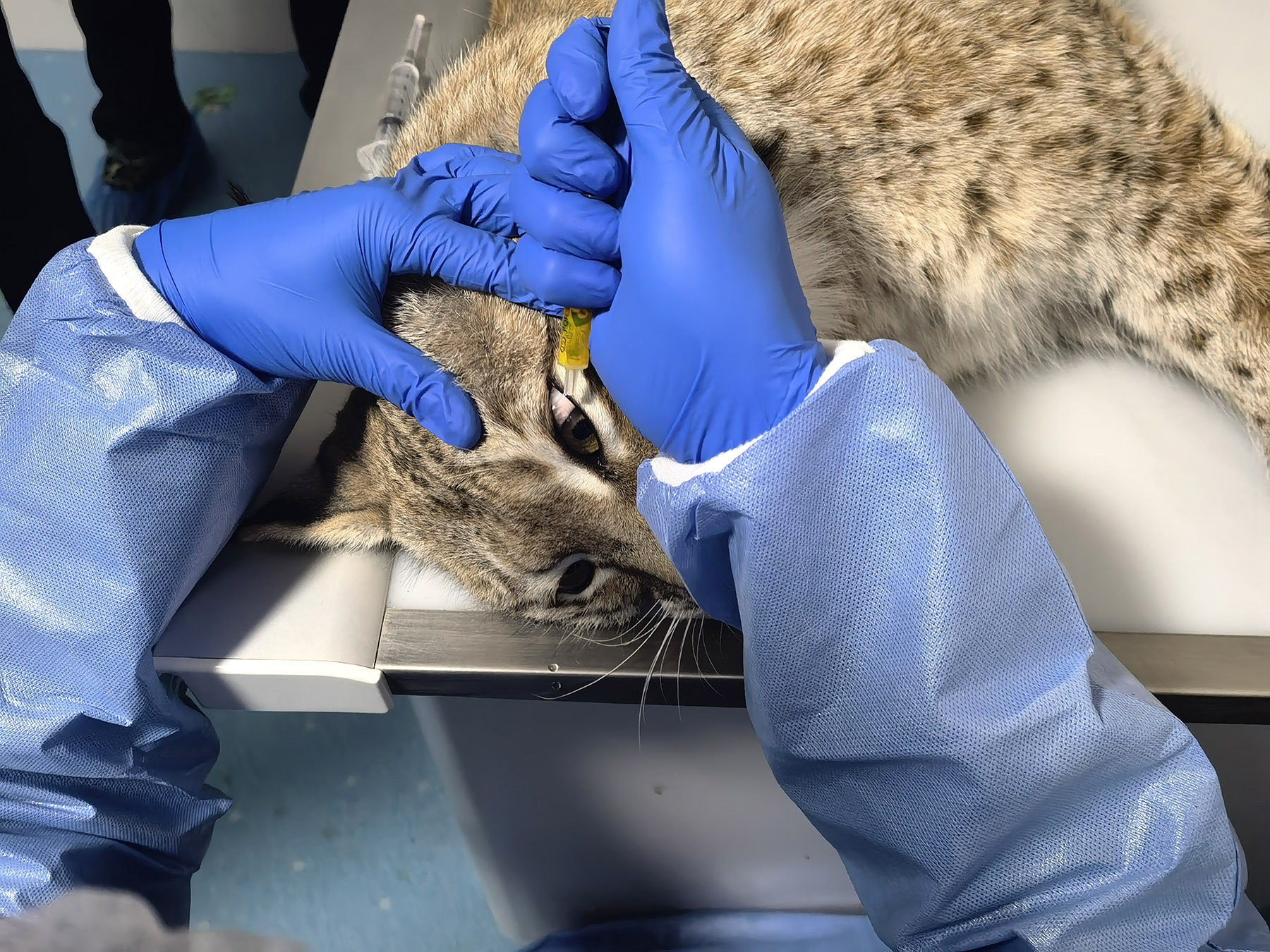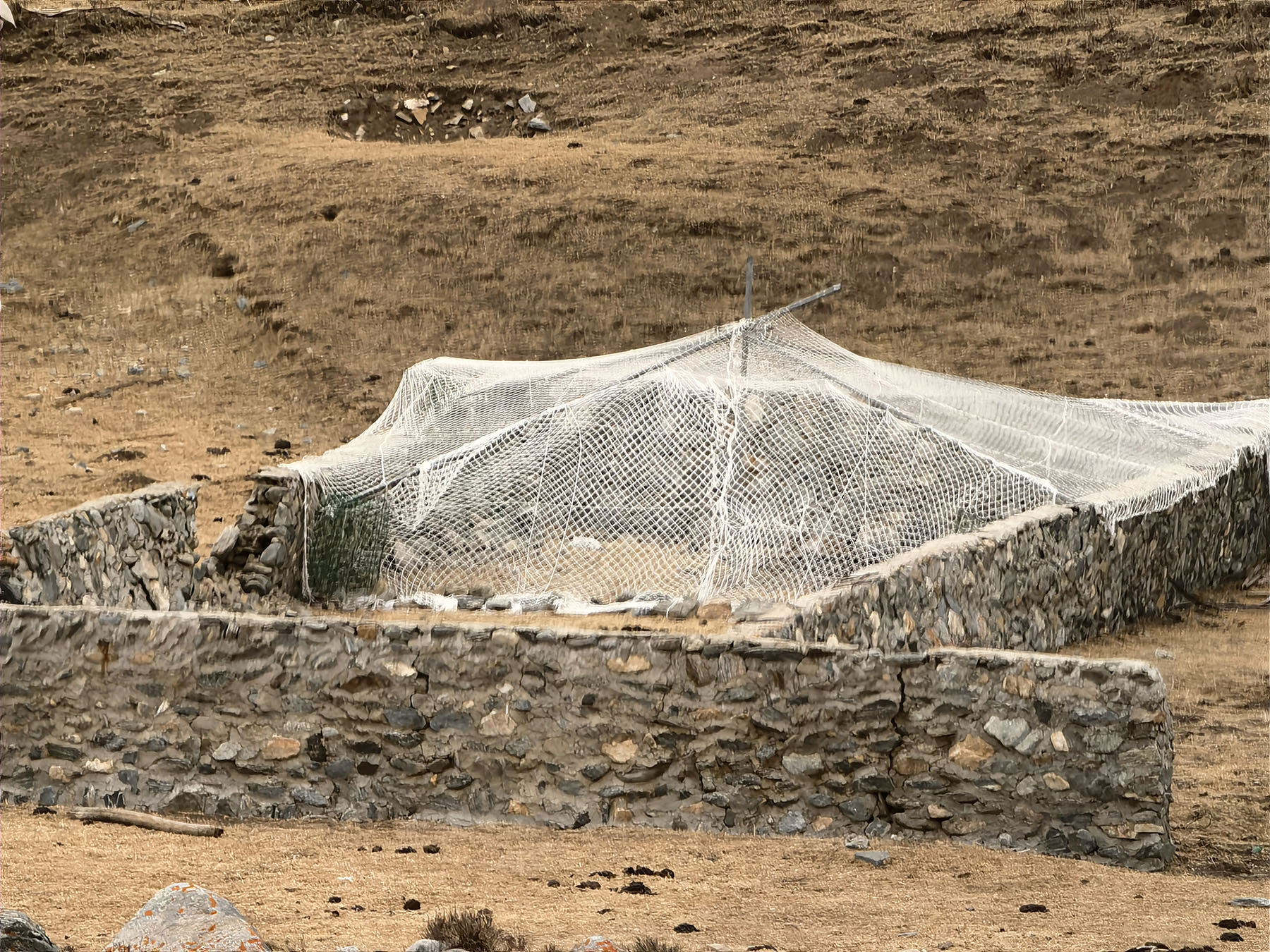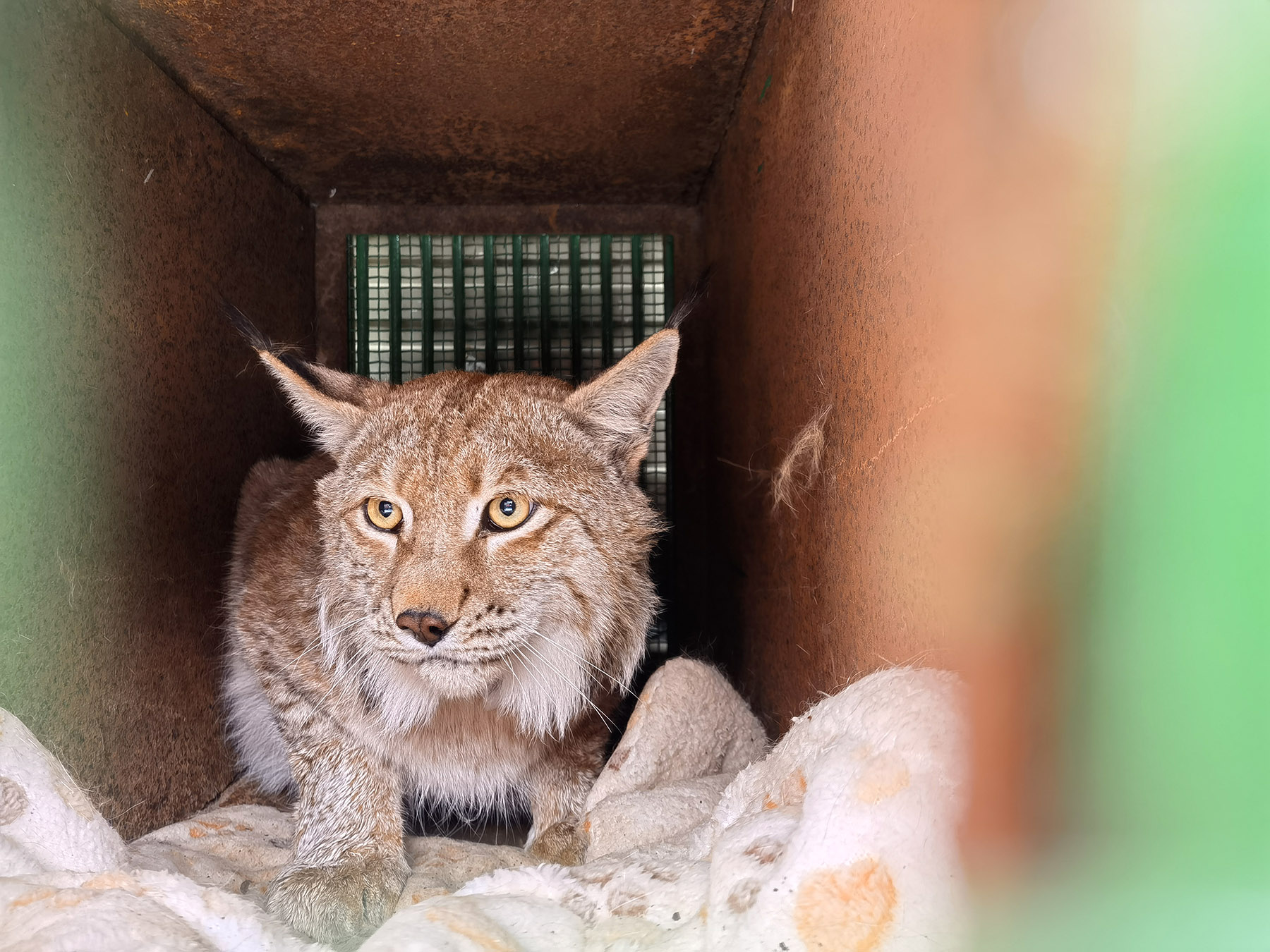A new book tells of an injured lynx cub, nursed back to health and returned to its natural habitat, Wang Ru reports.

When Qi Xinzhang, then deputy director of the Xining Wildlife Park in the capital of Northwest China's Qinghai province, received photos of a lynx from He Shunfu, then head of the park's veterinary hospital, in April 2021, he was confused.
The animal was tethered by a chain in a snowfield, and was cautious and lethargic. "What happened? Why was such a wild animal domesticated?" Qi wondered.
Soon he was told that the lynx had been caught by herders in Gangca county, Qinghai, after it had killed five lambs. The herders then reported the situation to the police. Noticing that the lynx appeared to be blind in one eye, the police officers sent it to the park, also known as Qinghai Wildlife Rescue and Breeding Center, for care.
READ MORE: Cameras capture hidden lives of rare animals
As wild animals are intuitively scared of and keep away from people, it's unusual for them to enter human settlements to attack domesticated animals, which often suggests that they have lost the ability to hunt in the wild. Therefore, Qi guessed it might be an old lynx that was too frail and sick to hunt.

However, things were not as they seemed, and Qi didn't imagine the strength of the bond he would develop with the animal in the following years.
In his newly published book, Lynx and the Zoo, Qi — now a member of Xining Botanical Garden and an online celebrity famous for popularizing knowledge related to wildlife — shares captivating stories about the lynx.
After being examined, the lynx was found to be a male cub less than a year old and its right eye had suffered an injury that caused its blindness. It was thought that it had left or been separated from its mother before being mature enough, and had lost its hunting abilities due to its eye injury.
The lynx was named Tianxian Baobao (Teletubbies) by Qi because it has tufts of hair on its ears, so it resembles the characters in the British children's television series Teletubbies, which have "antennas" on their heads.
The book tells how the cub was saved and finally returned to the wild.

He, who played an active role in the rescue and rehabilitation of the cat prior to its return to nature, emphasizes that the book thoroughly details the scientific methods used in the wildlife rescue process. The text's vivid descriptions bring back clear memories of his time with the lynx.
"We have a complete set of procedures, from treating its injury, helping to rehabilitate it, teaching it how to behave in the wild, to choosing where to release it and monitoring its movements after release. If we simply recount the facts, readers may feel bored. But by telling a vivid story, Qi imparts the knowledge while striking a chord with people who love wild animals," says He.
Ma Lingdi, editor of the book, expresses her admiration for the reintroduction of the lynx to the wild, noting that the process was far more scientific than she had previously imagined.
After examining the lynx, veterinarians found it was suffering from malnutrition and an injury that had led to blindness in one eye. However, after treatment, it gradually regained its strength and employees at the wildlife park quickly formed a strong bond with it. It was also discovered that the cat still had its natural hunting instincts, so it was decided that it was a suitable candidate to be returned to its natural habitat.
With the decision made, the park began to prepare for its return. The lynx's keepers kept their distance, in an attempt to break its trust in people. They also tried to hone its hunting abilities to ensure it would survive in the wild.

After choosing a suitable place to release the lynx — a nature reserve in Datong county, Qinghai — an enclosure was built to which it could return if it failed to thrive. A tracking collar was also attached around its neck, so its movements could be monitored.
He Shunfu says that Tianxian Baobao is a special case, as it's rare for a wild animal to remain in captivity for more than a year and then successfully return to the wild. The center had previously rescued and subsequently returned many wild animals to their natural habitats, but most had only been there for a short time. The long delay in the lynx's case was due to the COVID-19 pandemic, which had stopped its carers from returning it to the place where it was found, instead requiring them to find an alternative release site, He says.
Employees at the park had worried that the lynx might have become too dependent on them and would not be able to survive in the wild, but their fears proved unfounded and the cat thrived.
Qi says he worked at the Xining Wildlife Park for more than 12 years, during which he participated in the rescue and release of many wild animals, but this one was so special that he wanted to record the story in a book, particularly because after returning to the wild, Tianxian Baobao appeared to still remember his human friends.
Three months after the lynx was released, Qi and his colleagues, using the satellite signals from the tracking collar, visited the release site in an attempt to check its living environment.
At dusk, when Qi was hiking in the mountains, he suddenly saw the lynx appear from the bushes, standing on a nearby rock and looking directly at him for about three minutes before disappearing.

Astonishingly, though, when they analyzed Tianxian Baobao's movements, they found that it had followed Qi and his colleagues as they had returned to their vehicle, waiting close by until they had left. The cat had then returned to where it had come face-to-face with Qi.
"As a professional discussing scientific matters, I always tell people to stay rational instead of explaining animal activities through the lens of human emotions. However, tracking data has led me to believe that Tianxian Baobao may indeed have feelings for us. It was at that moment I decided to write this book," says Qi.
That decision has proved popular with the public. Currently, the book has received 9.5 points out of 10 on China's popular review site Douban.
He says that although the lynx's carers shared a bond with the animal, as soon as it became apparent that the cat would be able to survive in the wild, they knew it was their duty to release it. Only creatures judged unable to survive are kept in captivity.
ALSO READ: The panda keeper who cares for the bears
"True love for a wild animal is enabling it to live freely in the wild," says Qi.
Since 2010, the Qinghai Wildlife Rescue and Breeding Center has rescued more than 2,400 animals comprising 60 different species, among which 700 have been returned to the wild after recovery.
After the successful release of Tianxian Baobao, the tracking collar was allowed to fall off naturally, before being retrieved in January 2023. Since then, there has been no further news about the lynx, but sometimes when Qi drives near the area where the cat was last seen, he cannot help wondering how the cat is doing.
"After releasing the lynx in April 2022, I saw it again in the wild in July that year. Three years later, I feel like I am having a second reunion with it through the publication of this book," says Qi.
Contact the writer at wangru1@chinadaily.com.cn


